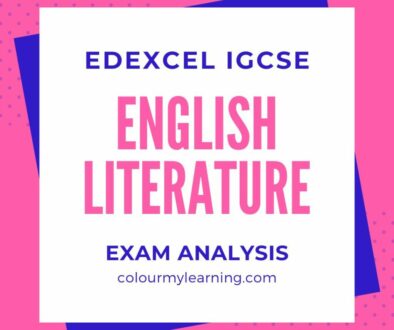Edexcel English Literature IGCSE Spec A 4ET1/01 – Exam Paper Format
There are two exam papers for Edexcel English Literature A with 90:60 mark distribution for 60:40 percent. The outline below shows the type of exam questions for each of the papers and how the marks and calculated for each.
Here is the exam paper analysis for Edexcel English literature iGCSE Spec A based on the new syllabus (first teaching 2016, first examination 2018).
For more details, see the specification from Edexcel
Assessment Objectives
AO1 Demonstrate a close knowledge and understanding of texts, maintaining a critical style and presenting an informed personal engagement. 30%
AO2 Analyse the language, form and structure used by a writer to create meanings and effects. 40%
AO3 Explore links and connections between texts. 10%
AO4 Show understanding of the relationships between texts and the contexts in which they were written. 20%
Paper 1: Poetry and Modern Prose
Total marks= 90 marks. Total time:2 hours
Poetry and Modern Prose (60% of total IGCSE)
Based on Poetry collection and one Modern prose text
Section A – Unseen Poetry
One 20 mark essay question exploring meaning and effects created in an unseen poem. The poem will be reproduced in the question paper.
Aim:explore how writers create meaning and effects in a range of seen and unseen poetry.
You will be expected to apply knowledge of poetic form, content and meaning to an unseen poem.
You must:
- demonstrate understanding of how writers create literary effects using, for example, imagery, descriptive skills, language choice, tone and mood, structure and form
- understand and use appropriate literary terminology
- identify and use relevant examples from poems.
Questions will test the following Assessment Objectives:
AO2 Analyse the language, form and structure used by a writer to create meanings and effects. 20%
Unseen Poetry Compiled Exam Questions
Section B – Anthology Poetry
This section of the test was removed during the Covid years. The complete paper has been reinstated from January 2023 onwards.
Aim:develop skills to compare a range of poetry
One 30 mark essay question from a choice of 2 comparing two poems from Part 3 of the Pearson Edexcel IGCSE English Anthology.
You must be able to apply knowledge of poetic form, content and meaning to compare poems.
You need to:
- demonstrate understanding of how writers create literary effects using, for example, imagery, descriptive skills, language choice, tone and mood, structure and form
- understand and use appropriate literary terminology
- make comparisons between poems, including use of language, structure and form
- identify and use relevant examples from poems.
Questions will test the following Assessment Objectives:
AO2 Analyse the language, form and structure used by a writer to create meanings and effects. 15%
AO3 Explore links and connections between texts. 15%
List of set texts:
If– – Rudyard Kipling
Prayer Before Birth – Louis MacNeice
Blessing – Imtiaz Dharker
Search For My Tongue – Sujata Bhatt
Half-past Two – U A Fanthorpe
Piano – D H Lawrence
Hide and Seek – Vernon Scannell
Sonnet 116 – William Shakespeare
La Belle Dame sans Merci – John Keats
Poem at Thirty-Nine – Alice Walker
War Photographer – Carol Ann Duffy
The Tyger – William Blake
My Last Duchess – Robert Browning
Half-caste – John Agard
Do not go gentle into that good night – Dylan Thomas
Remember – Christina Rossetti
Anthology Poetry Compiled Exam Questions
Anthology Poetry Exam Questions
Section C – Modern Prose
One 40 mark essay question from a choice of two on each of the set text.
Aim: explore how writers create meaning and effects in a range of modern prose texts.
You will demonstrate your knowledge and understanding of the chosen prose text. You should also understand the relationship between their prose text and the context* in which it was written.
You must:
- demonstrate a close understanding of their prose text
- maintain a critical style
- present an informed personal engagement
- identify and use relevant examples from their prose text
- understand the influence of contextual factors on the interpretation of texts.
Questions will test the following Assessment Objectives:
AO1 Demonstrate a close knowledge and understanding of texts, maintaining a critical style and presenting an informed personal engagement 20%
AO4* Show understanding of the relationships between texts and the contexts in which they were written
This component is a closed book examination and students may not take texts into the examination. 20%
List of set texts:
To Kill a Mockingbird, Harper Lee
Of Mice and Men, John Steinbeck
The Whale Rider, Witi Ihimaera
The Joy Luck Club, Amy Tan
Things Fall Apart, Chinua Achebe
Modern Prose Compiled Exam Questions
- To Kill a Mockingbird, Harper Lee
- Of Mice and Men, John Steinbeck
- The Whale Rider, Witi Ihimaera
- The Joy Luck Club, Amy Tan
- Things Fall Apart, Chinua Achebe
Modern Prose Prescribed Editions
| Book Cover | Title | Author | Publisher | Date Published | ISBN |

| To Kill a Mockingbird | Harper Lee | Arrow 50th Anniversary Edition | Jun 2010 | 9780099549482 |

| Of Mice and Men | John Steinbeck | Penguin Red Classics New Ed Edition | Jan 2006 | 9780141023571 |

| The Whale Rider | Witi Ihimaera | Heinemann; 1st Edition | Feb 2005 | 9780435131081 |

| The Joy Luck Club | Amy Tan | Vintage; New Ed Edition | Jun 1991 | 9780749399573 |

| Things Fall Apart | Chinua Achebe | Penguin Red Classics | Jan 2006 | 9780141023380 |
Paper 2: Modern Drama and Literary Heritage Texts
Total marks= 60 marks. Total time: 1 hour 30 mins (40% of total IGCSE)
You are advised to allocate 45 minutes to each section of the test.
This part of the exam is open book. You may take a clean copy of the prescribed edition of the selected text in to the examination room.
Section A – Modern Drama
Answer one 30-mark essay question from a choice of two on each of the set texts
You will need to show your knowledge and understanding of the drama text, including the ways in which writers use language, form and structure to create effects.
You are expected to:
- demonstrate a close understanding of their drama text
- maintain a critical style
- present an informed personal engagement
- understand how writers create literary effects
- understand and use appropriate literary terminology
- identify and use relevant examples from the play.
Questions will test the following Assessment Objectives:
AO1 Demonstrate a close knowledge and understanding of texts, maintaining a critical style and presenting an informed personal engagement. 15%
AO2 Analyse the language, form and structure used by a writer to create meanings and effects. 15%
List of set texts:
A View from the Bridge, Arthur Miller
An Inspector Calls, J.B. Priestley
The Curious Incident of the Dog in the Night-time, Mark Haddon and Simon Stephens
Kindertransport, Diane Samuels
Death and the King’s Horseman, Wole Soyinka
Modern Drama Compiled Exam Questions
- A View from the Bridge
- An Inspector Calls
- The Curious Incident of the Dog in the Night-time
- Kindertransport
- Death and the King’s Horseman
Modern Drama Prescribed Editions
| Book Cover | Book Title | Author | Publisher | Date Published | ISBN |
|---|---|---|---|---|---|

| A View from the Bridge | Arthur Miller | Penguin Modern Classics | 01 March 2010 | 9780141189963 |

| An Inspector Calls | J.B. Priestley | Penguin Modern Classics; New Ed Edition | 01 March 2001 | 9780141185354 |

| The Curious Incident of the Dog in the Night-time | Mark Haddon and Simon Stephens | Methuen Drama | 01 April 2013 | 9781408185216 |
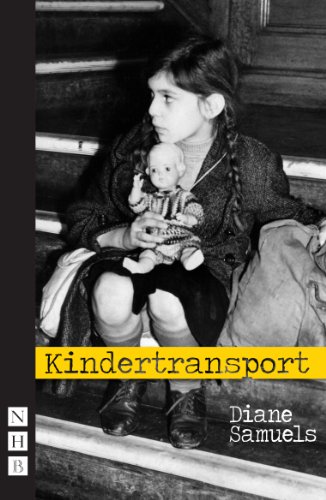
| Kindertransport | Diane Samuels | NHB Modern Plays (Nick Hern Books 2 Edition) | 01 May 2008 | 9781854595270 |
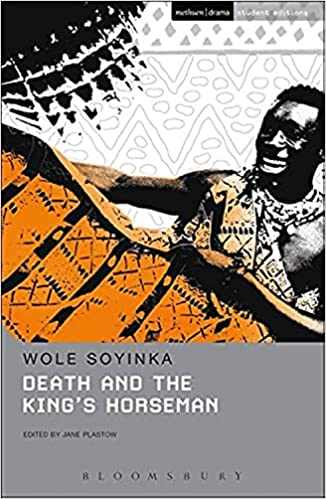
| Death and the King’s Horseman | Wole Soyinka | Mehuen Student Editions | 01 July 1998 | 9780413695505 |
Section B – Literary Heritage Texts
Answer one 30-mark essay question from a choice of two on each of the set texts
You will need to demonstrate their knowledge and understanding of the text, including the ways in which writers use language, form and structure to create effects. You should also understand the relationship between the text and the context in which it was written.
You must be able to:
- demonstrate a close understanding of their heritage text
- maintain a critical style
- present an informed personal engagement
- understand how writers create literary effects
- understand and use appropriate literary terminology
- understand the influence of contextual factors on the interpretation of texts
- identify and use relevant examples from the text.
Questions will test the following Assessment Objectives:
AO1 Demonstrate a close knowledge and understanding of texts, maintaining a critical style and presenting an informed personal engagement. 10%
AO2 Analyse the language, form and structure used by a writer to create meanings and effects. 10%
AO4* Show understanding of the relationships between texts and the contexts in which they were written.10%
List of set texts:
Romeo and Juliet, William Shakespeare
Macbeth, William Shakespeare
The Merchant of Venice, William Shakespeare
Pride and Prejudice, Jane Austen
Great Expectations, Charles Dickens
The Scarlet Letter, Nathaniel Hawthorne
Heritage Texts Compiled Exam Questions
- Romeo and Juliet, William Shakespeare
- Macbeth, William Shakespeare
- The Merchant of Venice, William Shakespeare
- Pride and Prejudice, Jane Austen
- Great Expectations, Charles Dickens
- The Scarlet Letter, Nathaniel Hawthorne
Heritage Texts Prescribed Editions
| Book Cover | Book Title | Author | Publisher | Date Published | ISBN |
|---|---|---|---|---|---|

| Romeo and Juliet | William Shakespeare | OUP Oxford; New Edition | 01 July 1998 | 9780198321668 |

| Macbeth | William Shakespeare | OUP Oxford; 1 Edition | 01 September 2008 | 9780198324003 |
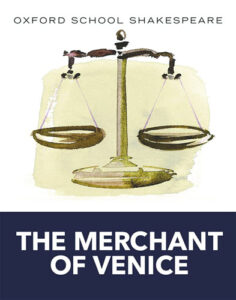
| The Merchant of Venice | William Shakespeare | OUP Oxford; New Edition | 01 March 2009 | 9780198328674 |

| Pride and Prejudice | Jane Austen | Penguin Books; 1 Edition | 01 September 2004 | 9780141439518 |
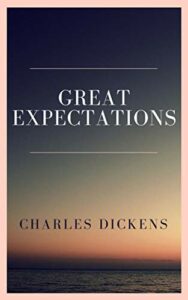
| Great Expectations | Charles Dickens | Penguin Classics | 01 April 2012 | 9780141198897 |

| The Scarlet Letter | Nathaniel Hawthorne | Alma Classics | 01 June 2015 | 9781847494214 |
*AO4 requires you to understand the relationship between a text and its context
There are different kinds of context which can affect a writers’ work and the reader’s response to it.
- the writer’s own life and individual situation, including the place and time of writing, only where these relate to the text
- the historical setting, time and location of the text
- social and cultural contexts (for example, attitudes in society; expectations of different cultural groups)
- the literary context of the text, for example, literary movements or genres
- the way in which texts are received and engaged with by different audiences, at different times (for example, how a text may be read differently in the 21st century from when it was written).










